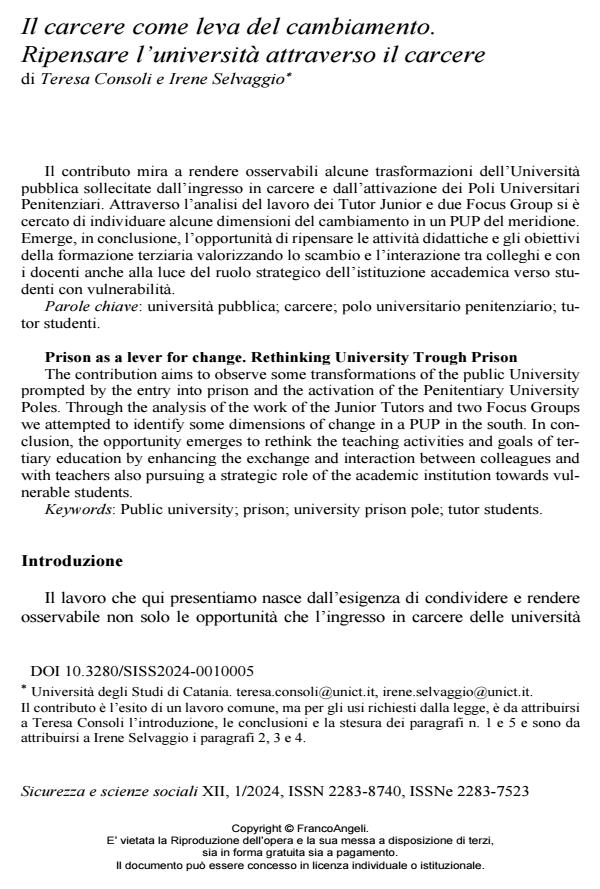Prison as a lever for change. Rethinking University Trough Prison
Journal title SICUREZZA E SCIENZE SOCIALI
Author/s Teresa Consoli, Irene Selvaggio
Publishing Year 2024 Issue 2024/1
Language Italian Pages 19 P. 49-67 File size 256 KB
DOI 10.3280/SISS2024-001005
DOI is like a bar code for intellectual property: to have more infomation
click here
Below, you can see the article first page
If you want to buy this article in PDF format, you can do it, following the instructions to buy download credits

FrancoAngeli is member of Publishers International Linking Association, Inc (PILA), a not-for-profit association which run the CrossRef service enabling links to and from online scholarly content.
The contribution aims to observe some transformations of the public University prompted by the entry into prison and the activation of the Penitentiary University Poles. Through the analysis of the work of the Junior Tutors and two Focus Groups we attempted to identify some dimensions of change in a PUP in the south. In conclusion, the opportunity emerges to rethink the teaching activities and goals of tertiary education by enhancing the exchange and interaction between colleagues and with teachers also pursuing a strategic role of the academic institution towards vulnerable students.
Keywords: Public university; prison; university prison pole; tutor students.
Teresa Consoli, Irene Selvaggio, Il carcere come leva del cambiamento. Ripensare l’università attraverso il carcere in "SICUREZZA E SCIENZE SOCIALI" 1/2024, pp 49-67, DOI: 10.3280/SISS2024-001005